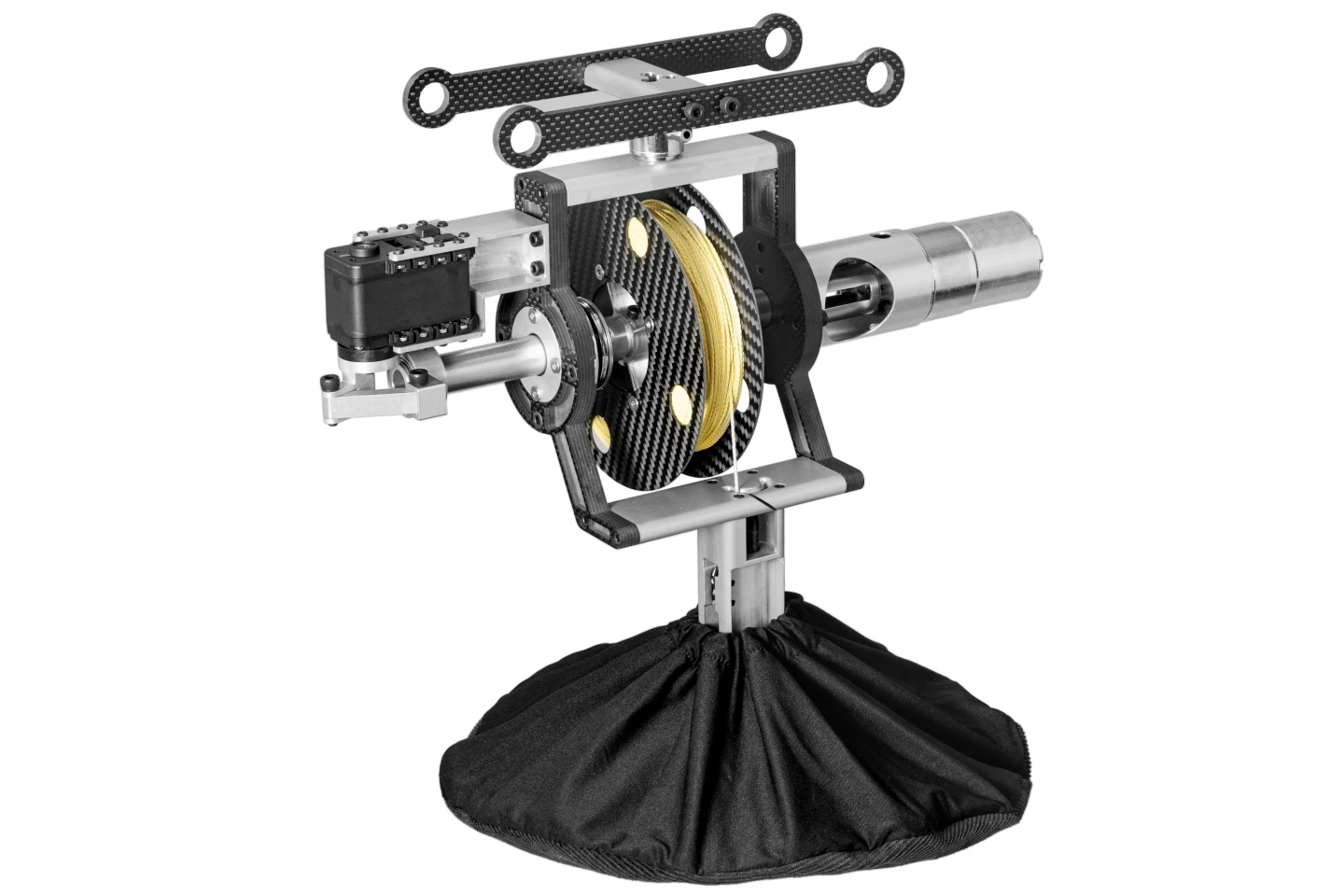Many people don't like the thought of delivery drones buzzing up to their doorstep, with their propellers whirling dangerously close. The RDS1 setup was designed with that in mind, as it drops packages – in free-fall – but doesn't let them hit the ground.
Created by Los Angeles-based company A2Z Drone Delivery, the RDS1 (Rapid Delivery System 1) incorporates a remotely piloted DJI Matrice 600 Pro hexacopter drone that's equipped with a motorized reel of Kevlar cord. At the end of that tether is an elastic fabric pouch that can hold a payload weighing up to 2 kg (4.4 lb).
When the drone reaches its destination, it remains hovering at an altitude of 150 ft (46 m). It then releases the brake on its tether reel, allowing the payload pouch to freely fall through the air. Shortly before that pouch reaches the ground, however, the reel brake is gently reapplied, slowing the payload's descent to a stop.
This functionality is made possible by a LiDAR (Light Detection and Ranging) sensor on the drone, which measures exactly how far the aircraft is from the ground.

After the client retrieves their package, the now-empty pouch is reeled back up to the copter. If needed, the client can also place a package of their own in the pouch, for delivery to another address. The drone then continues on its way.
The system is intended not only to spare clients from the noise and potential danger of a low-hovering drone, but it also keeps the drone from having to waste time and battery power by maneuvering its way around obstacles such as tree branches and power lines. RDS1's free-fall component is likewise intended to save time and power, as compared to setups in which the reel's motor is used to slowly lower the payload to its recipient.
Source: A2Z Drone Delivery





